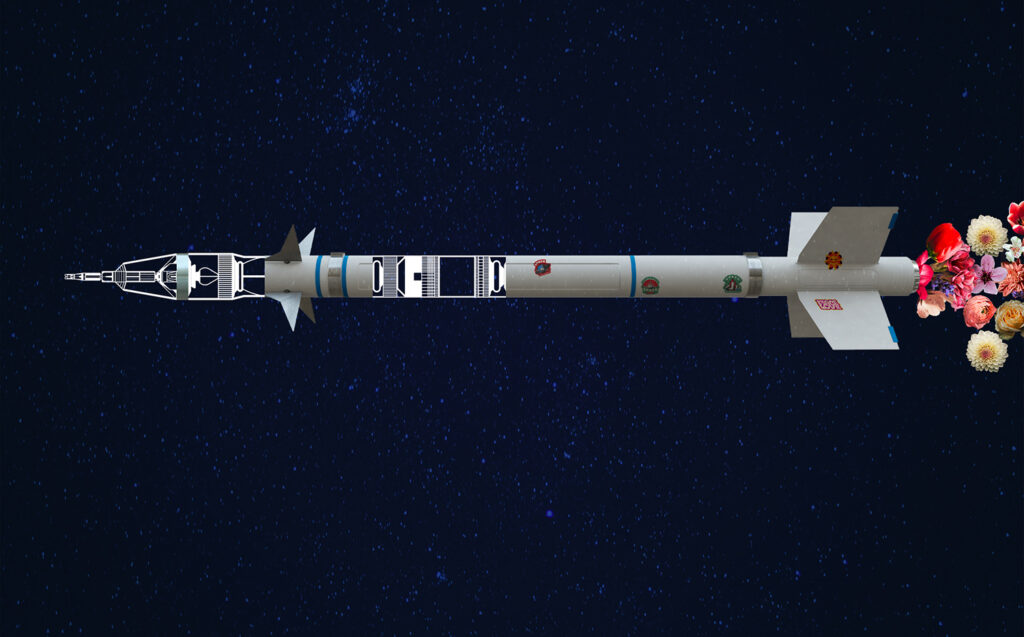“Mankind must put an end to war, or war will put an end to mankind.”
John F. Kennedy (1917-1963), American politician who served as the 35th president of the United States from 1961 until his assassination
On May 12, Hamas sent 130 long-range missiles toward Tel Aviv, about 17% of its entire arsenal launched to that point. In 2014, medium- to long-range rockets were about 8% of the total, and in 2012 only 1%. In addition to these numbers, Israeli intelligence has estimated that Hamas, the Islamic Jihad and other Palestinian militant groups may have about 30,000 rockets hidden in Gaza. Israel has responded with bombing and artillery raids to destroy launch and manufacturing sites.
While most of Hamas’ arsenal has a short range of about 10 km, and are low-cost rockets with no control (some fall inside Gaza), the medium-range arsenal is based on Iranian and Russian designs and can reach up to 30 km. Long-range rockets launched from Gaza could reach as far as Ben-Gurion Airport, about 70 km away. These include the M-75 and J-80, both of which were assembled in Gaza thanks to technology made available by Iran (note: Israel has an anti-missile defense system called Iron Dome, but a large number of attacks would result in a few rockets capable of hitting their target).
Long range consequences
There’s a continuous red line that starts centuries ago with Isaac Newton, gets developed in a Caltech lab, passes through the halls of Google, swings by a desk at the CIA, goes to the Moon and back down to Earth, twists around Washington, pops up at the United Nations before resurfacing in Russia, Chechnya, Kosovo, even all the way to Beijing, and then emerges in a basement in the middle east. This red line is the rocket, an unusual object built by humanity’s desire to go higher, go faster, break harder, and kill better. Somehow the rocket is behind many glories and massacres of our century.
The first rocket (small note of folklore: Wikipedia says that the word rocket, even in its English version “rocket” comes from the Italian “rocchetta”) was invented in China as a propulsion system to push arrows further. From there it passed to the Battle of Chioggia (near modern day Venice) in 1310, to Istanbul in 1633, and then spread throughout Europe from the 17 century onwards.
In 1912 a US physicist named Robert Goddard began to seriously study rockets, redesigning their combustion chambers, and increasing their efficiency by changing the fuel feed nozzle. In those years Goddard, a shy man not particularly loved by colleagues and the press, was laying the foundations for modern rocketry, as well as for the field of space exploration that would come after him (NASA’s Goddard Space Centre is dedicated to him).
Modern rocketry was born when Goddard attached a supersonic nozzle to the combustion chamber of a liquid propellant engine. The nozzle converted hot gas from the combustion chamber into a cold, highly-directed jet of gas that traveled at hypersonic speeds, allowing the engine’s efficiency to be increased from 2% to 64%. In addition to the invention of liquid-propellant rockets, Goddard also invented a method of navigation control consisting of a gyroscope and thrust control, which allowed for better control of flight.
After the first world war Germany began experimenting with rockets too. The artillery restrictions imposed by the Treaty of Versailles did not allow Germany to access long-range weaponry, so they did what Iran would have done sixty years later: they began sponsoring a space research company founded a decade earlier, the Verein für Raumschiffahrt (also known as VfR). From this hotspot of researchers and scientific minds emerged a young rocket-loving scientist, Wernher von Braun, who was by no estimation, a minor character in the divine human tragedy, being the one who developed the Nazis rockets used in World War II.
In a plot twist à le Carré, at the end of the Second World War von Braun found himself on the other side of the fence. Thanks to a controversial secret operation called Paperclip, many Nazi scientists who had done particular damage during the WWII were invited to the U.S. to help the military , with the promise of diplomatic immunity. von Braun overnight turned from Nazi to Yankee, and transformed the German and lethal V-2, a rocket used by Germany to bomb Belgium, France and England, into what would become the Redstone Rocket, one of the first prototype rockets used in space exploration.
(This is not von Braun’s story, but for anyone interested in his role within the Third Reich and his “American rehabilitation,” here is a book that tells his story)
The Juno 1 version of the Redstone launched Explorer 1, the first U.S. orbital satellite in 1958, and the Mercury-Redstone variation carried the first two U.S. astronauts into space in 1961. On the other hand, Russia sent the first ever satellite into space (Sputnik-1) in 1957, and the ability to launch the satellite came straight from the Soviet intercontinental ballistic missile (ICBM) arsenal, which is a missile with a minimum range of 5,500 kilometres, primarily designed for nuclear weapons delivery. And so, from the ballistic missile-based nuclear arms race between Russia and USA following World War II, the Space Race was born, which brought pioneering launches of artificial satellites, robotic space probes to the Moon, Venus, and Mars, and ultimately human spaceflight to the Moon.
At the conclusion of the Cold War, and after the Iranian revolution of 1979, the change of geopolitical balance in the Middle East led to an unexpected marriage between Tehran and Moscow. The coalition was based on technology and cooperation in the area of missiles, satellites and nuclear technologies, seen by both nations as a way to gain power and influence (regionally for Iran and globally for Russia). Since the early 2000s Russia has been the biggest fan of Iran’s tech development, supporting not only nuclear operations, but also satellite launches and helping in the creation of the Shahab-3, a family of long range rockets. From this point on in History, recovering the red line that started a century earlier from Robert Goddard’s studies is not difficult. We find it again today in Iran and in the ashes of Gaza, aware that the problem is never the technology, but how it is used.
Over The Pop
Mona Chalabi | Mona Chalabi is a well-known Guardian illustrator and Palestinian activist. The link is to her graphic representation of the demolition of Palestinian buildings in the last ten years by the Israeli authorities.
Conflict in Israel and Palestine: Crash Course World History 223 | Crash Course is a YouTube initiative of high quality educational videos created by the Green brothers. In this 2015 video, they attempt to explain the basics of the conflict.
New York Times | The Israeli- Palestinian Crisis, Reignited: the Daily is a New York Times podcast that covers everything from love crises to stock market crises. This episode features an interview with Isabel Kershner, their Jerusalem correspondent, who explains what triggered this new wave of retaliation.
 This article appeared for the first time on our fortnightly newsletter. To keep up with the scientific debate, join the community of Monnalisa Bytes and to receive a preview of all our newsletters subscribe here!
This article appeared for the first time on our fortnightly newsletter. To keep up with the scientific debate, join the community of Monnalisa Bytes and to receive a preview of all our newsletters subscribe here!
